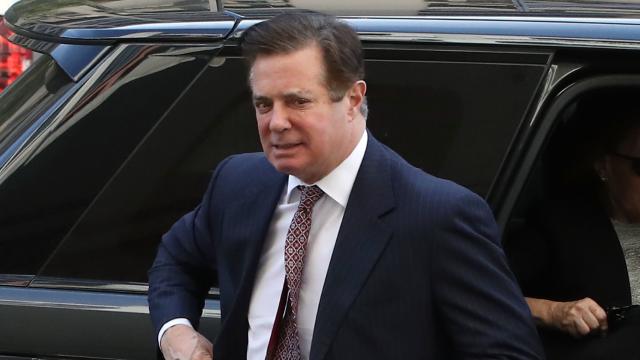Electronic communication can still create a paper trail, as former Trump campaign chairman Paul Manafort learned recently when his bail was revoked for alleged witness tampering while he was on house arrest awaiting two trials.
Manafort is accused by prosecutors of using WhatsApp to send encrypted messages to possible witnesses, as well as using a practice called “foldering,” in which one writes an email but doesn’t send it, instead saving it in the email client’s Drafts folder. Then other people with the password to that email account can log in, read the email in the Drafts folder, and delete it before it’s sent.
Manafort didn’t invent this technique: Former CIA head David Petraeus was busted using foldering to communicate with his biographer while the two were having an affair, and Al-Qaeda is suspected of using this practice as far back as 2005. It even pops up in the 2008 spy movie Traitor.
The idea is, since a saved email draft is never sent, metadata showing the time of transmission and IP addresses involved is never created. But the messages are still stored on a cloud server, which can be subpoenaed by government investigators, and since multiple people have the password to the account, multiple people also have the opportunity to leak the messages’ content. So it’s not a foolproof way of keeping your communications secret – again, just ask Paul Manafort – but it could still be a clever way of passing secret notes and feeling as sneaky as you used to when dead-dropping paper notes through the vents on your friends’ lockers back in high school.
You don’t need yet another email account to pull this off, either. Here are some better ideas for “foldering” using other apps and services.
Share a note in the Notes app
Apple’s Notes app is more than the preferred vehicle for screenshotted celebrity apologies; it also lets you share notes with friends to collaborate on them together. Your group could keep a long-running note that gets updated on each of your Apple devices when anyone saves it, but is never actually sent like an email. Better yet, if everyone uses Notes already, you don’t have to share a password, just give everyone access to the same note.
Use a cloud-based notes service like Simplenote
Simplenote is free, easy to use, and cross-platform. If you and a friend share a Simplenote account, you could leave any number of notes that are kept in sync over Simplenote’s cloud server. Just keep in mind, anyone with the password would be able to see all your notes, so don’t use the same account for anything that’s for your eyes only. Evernote could work, too, but the free Basic account only syncs to two devices.
Share a Dropbox folder
If you and your friend both use Dropbox, you can leave notes for each other in a shared folder, and any changes to that folder are synced between any devices signed into your Dropbox account. You don’t have to share your Dropbox credentials with this method, either, which lets you keep the rest of your Dropbox files private — just don’t put them in the shared folder, obviously. Even better, you could password-protect files before uploading them to the shared folder, for an extra layer of security.
Use a to-do list app
If the messages you want to share are relatively short, you could try a task management app. You and your friend can pick an app, like Any.Do, and either share an account or just share a task list. Add new messages as to-do items, and your friend can check them off as complete as he reads them.
Leave voice memos for each other
Plenty of voice-recording apps, like RecUp for iOS or VoiceDrop for Android let you save your voice memos to Dropbox. You could set up a new Dropbox account and share the credentials — the free Dropbox Basic account comes with 2GB of storage — but you probably don’t have to. First, install the app on your phone, connect it to your Dropbox, and choose a folder to store recordings. Then, in the Dropbox app, share that same folder with your friend. Then when your friend sets up the same voice-memo app, he can connect his own Dropbox and have the app save recordings in the same shared folder.

Comments